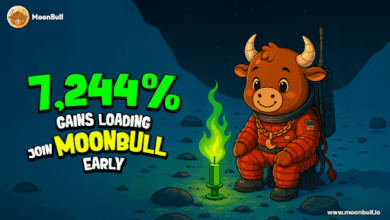Ethereum Gas Fees Plummet to Record Low
Ethereum gas fees drop to just 0.067 Gwei, sparking debate over network health and future revenue sustainability.

- Ethereum gas fees hit an ultra-low 0.067 Gwei
- Traders benefit from cheaper transactions
- Raises concerns over ETH’s long-term revenue model
Cheaper Transactions Delight Traders
Ethereum gas fees have dropped to a jaw-dropping 0.067 Gwei, marking one of the lowest points in recent history. For traders and regular users, this means near-zero transaction costs—a welcome change from the often pricey fees seen during network congestion.
Low fees allow users to move assets, swap tokens, and interact with DeFi protocols without the usual cost burden. It’s a major plus for those engaging in smaller transactions or experimenting with decentralized apps. Cheaper gas also encourages broader adoption by reducing entry barriers.
However, while the community celebrates the short-term benefits, not everyone sees this as good news.
A Warning Sign for Ethereum’s Revenue Model?
The drop in gas fees is primarily due to a notable slowdown in network activity. While this means less congestion and lower costs, it also results in reduced revenue for Ethereum validators. Ethereum’s current proof-of-stake model depends on fees and MEV (Maximum Extractable Value) to incentivize validators and secure the network.
Lower fees could signal weakening network demand or a temporary lull in activity. Either way, it raises important questions about sustainability. If Ethereum continues to operate with ultra-cheap gas, can it maintain robust security and development funding over the long term?
This scenario puts pressure on Ethereum developers and the broader ecosystem to explore alternative revenue models or improvements that can balance affordability with sustainability.
Is It a Trend or Just a Phase?
Some experts believe this dip in gas fees is temporary, possibly due to a decline in meme coin hype, NFT volume, or general market activity. Others argue it could reflect a maturing network with improved scalability, especially with Layer 2 solutions handling more transactions.
Regardless, the ultra-low gas levels have sparked an important debate: Is Ethereum entering a more efficient phase, or is this a red flag signaling reduced interest and revenue?
The coming weeks will be crucial in determining whether Ethereum’s ultra-cheap gas is truly a blessing—or a warning of deeper issues ahead.
Read Also:
- Ethereum Dominates with $84.9B Stablecoin Growth
- 4 Best Cryptos to Buy Today: BlockDAG, XRP, Ethereum, and Solana Leading the Market
- Ethereum Gas Fees Plummet to Record Low
- Bitcoin Closes Above 50-Week MA, Bullish Signal Ahead?
- Trump Hints at Imminent End to U.S. Government Shutdown



